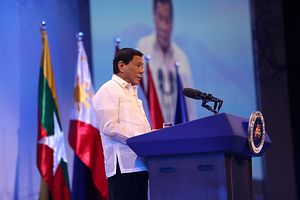This week, a commemoration was held to mark the 25th anniversary of the decades-old subregional grouping known as the Brunei Darussalam-Indonesia-Malaysia-Philippines East ASEAN Growth Area (BIMP-EAGA). The event, held in Davao City in the Philippines where the grouping first got off the ground, once again placed the emphasis on cooperation at the subregional level in Southeast Asia that is often overlooked.
As I have written previously in these pages, one of the key examples of ASEAN subregional cooperation is BIMP-EAGA, an initiative set up in 1994 to promote economic ties which consists of four ASEAN countries: the entirety of Brunei; Palawan and Mindanao in the Philippines, the states of Sabah and Sarawak and the Federal Territory of Labuan in Malaysia, and ten provinces on the islands of Kalimantan, Sulawesi, Maluku, and Irian Jaya in Indonesia.
While BIMP-EAGA has faced some continued challenges in getting off the ground, work toward the realization of the initiative has continued on, including increasing trade, investment, and tourism arrivals on an incremental basis. Under BIMP-EAGA Vision 2025 (BEV 2025), there is a commitment to create a resilient inclusive, sustainable, and economically competitive BIMP-EAGA (R.I.S.E. BIMP-EAGA) to narrow the development gap, with priority areas such as green manufacturing, fisheries, tourism, and agriculture.
The work to advance BIMP-EAGA has continued on into 2019 as well. Indeed, just earlier this month, the 2019 BIMP-EAGA Strategic Planning meeting was held in Kota Kinabalu in the Malaysian state of Sabah.
This week, BIMP-EAGA was in the spotlight again with the commemoration of the body’s 25th anniversary as well as the 9th anniversary of the Mindanao Development Authority (MinDA). The commemoration activities were held at the SMX Convention Center in Davao City, where the first BIMP-EAGA ministers’ meeting was held back in 1994 and where Duterte had previously served as mayor before running for president.
While there were a series of events held to commemorate the anniversary, Duterte’s remarks to BIMP-EAGA members on February 19 during his attendance at the event unsurprisingly got the headlines. Per the Philippine News Agency (PNA), Duterte’s remarks touched on the importance of advancing subregional collaboration in the face of uncertainty about the future direction of the global economy and the rise of transnational threats.
In his remarks, Duterte focused in particular on security threats to include piracy, illegal drugs, and terrorism. He framed the Philippines’ security situation as one that comprised “so many fronts to cover,” including not just threats to address but also opportunities such as promoting peace in the southern Philippines, and he also defended the Philippine government’s approach to dealing with these opportunities and challenges relative to its opponents, noting that they did not target innocent civilians.
Unsurprisingly, Duterte himself did not delve into some of the nuances of agenda items that continue to be advanced at the working level in BIMP-EAGA. Nonetheless, how meetings at the working level progress through 2019 and beyond will be important to observe in terms of what they say about the future of the institution as well as subregionalism in the Southeast Asian context more generally.

































